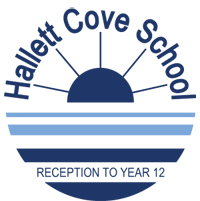senior school
Year 11 and 12 OverviewTHE SOUTH AUSTRALIAN CERTIFICATE OF EDUCATION (SACE):
The curriculum for students in Year 11 and Year 12 is underpinned by the South Australian Certificate of Education (SACE). The SACE prepares young people for work, life and learning in a changing world by building essential skills, knowledge and understanding that supports them in achieving their life and career goals. The SACE provides considerable flexibility for young people and helps them to build on their learning throughout their school life as well as preparing them for life beyond secondary school ÔÇô whatever path they may choose to take.
╠ř
The SACE comprises two Stages, studied predominantly across Year 11 and Year 12:
- Stage One ÔÇô studied by Year 10 and Year 11 students
- Stage Two ÔÇô studied by Year 12 students
╠ř
REQUIREMENTS OF THE SACE:
Each subject or course successfully completed earns credits towards the SACE, with a minimum of 200 credits required for students to qualify for their certificate. For Stage 1 subjects, students will receive an A to E grade, while Stage 2 subjects are graded from A+ to E-. As a general guide, 10 credits usually equates to a semester subject, with Stage 2 subjects being studied for the full year and equating to 20 credits.
╠ř
STRUCTURE OF THE SACE:
- Exploring Identities and Futures (EIF) – usually undertaken in Year 10, worth 10 Stage 1 credits
- Literacy ÔÇô at least 20 credits from a range of English subjects or courses
- Numeracy ÔÇô at least 10 credits from a range of Mathematics subjects or courses
- Activating Identities and Futures (AIF)╠ř ÔÇô an in-depth major project undertaken in Year 11, worth 10 Stage 2 credits╠ř
- Completion of a minimum of 90 additional Stage 1 or 2 credits.
- Completion of a minimum of 60 additional Stage 2 credits to a C grade or better.

EIF, AIF, Literacy subjects and Numeracy subjects are all Compulsory elements of The SACE. For compulsory subjects, students must achieve a C grade or better to meet their SACE requirements.╠ř
Students will choose from a wide range of subjects and courses to earn the remaining 150 credits. These remaining subjects are flexible and should be chosen based on a studentÔÇÖs interests, strengths, interests and possible career pathways.
ADDITIONAL LEARNING OPPORTUNITIES
During Year 11 and 12 students take part in a range of activities including:
- a relevant, meaningful and engaging Pastoral Care program designed to support the social, emotional and wellbeing of our young people. Through the Keeping Safe: Child Protection Curriculum, topics such as safe partying, respectful relationship, risk taking and problem solving is explored. There is also a focus on goal setting, study skills, career development and planning, and exploration of future pathways, including guest speakers from the Universities, TAFE SA, and Registered Training Organisations.
- Vocational Education and Training (VET) courses ÔÇô a wide range of courses are available to students who are interested in investigating particular career pathways ÔÇô HCS is aligned to the Southern Adelaide and Fleurieu Secondary School Alliance.
- Additional extra curricular experiences such as excursions to explore future careers, working with local government and volunteering opportunities are also available to Year 11 and 12 students.
How SACE Works
Year 11 Overview Video
An intoduction to Year 11
Year 11 Subject Options
An overview of our year 11 subject structure
Curriculum Handbook
Information on all subjects 7-12
Year 12 Overview Video
An intoduction to Year 12
Year 12 Subject Options
An overview of our year 12 subject structure
VET Options
Explore the VET offerings in the Southern Adelaide & Fleurieu Secondary School Alliance
Understanding VET
How does VET work? What are the options? All this and more, explained in the video.
